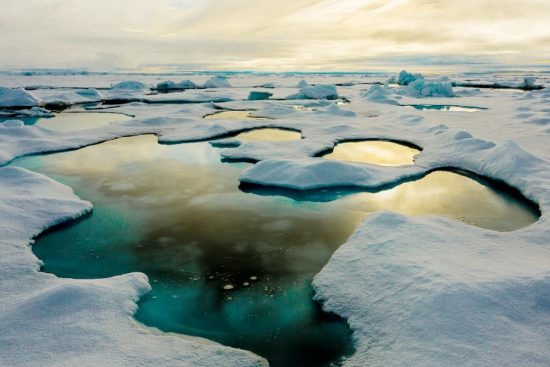


In the Arctic, melt ponds are formed every year when snow and sea ice melt at the end of winter. As a result of global warming, there are increasingly more and larger melt ponds with each new year.
Besides providing more light and heat for the ice and underlying water, such melt ponds have their own ecosystems, comprising algae and bacteria. A recent study published in Polar Biology focuses on melt ponds and how they can be a source of food for marine creatures. It was authored by Heidi Louise Sørensen, who studied the phenomenon in a number of melt ponds in North-Eastern Greenland as part of her PhD thesis at University of Southern Denmark (SDU).
During summer, when all the sea ice melts, the algae and other organisms in the melt ponds are released into the ocean. They are subsequently consumed by the marine organisms living at the various levels of the water column.
At the upper portion, krill and copepods are the main predators. At the lower portion, it is the seafloor dwellers like sea cucumbers and brittle stars.
For some time, scientists have wondered why some melt ponds have many organisms living within them, while others have none. Then, it was discovered that it is the presence of nutrients like phosphorus and nitrogen that allows entire communities of algae and micro-organisms to flourish.
There are several ways nutrients can find their way into a melt pond: by being washed in with waves of seawater, being transported by duststorms from the mainland, being washed with earth from the coast out on the ice when it rains, or by birds or larger animals that rest on the ice and leave behind sources of nutrient.
With climate change comes more storms and precipitation. This would result in more nutrients being released into the melt ponds. In addition, the increase in the distribution of areas of melt ponds can also contribute to higher productivity in plant and animal life in the Arctic seas, according to Professor Ronnie N. Glud of the Department of Biology at USD.
 Herbert
Herbert 26th September 2017
26th September 2017